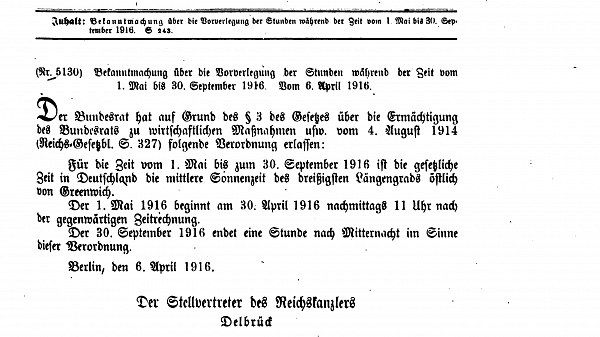History of Daylight Saving Time (DST)
Daylight Saving Time (DST) is used to save energy and make better use of daylight. It was first used in 1908 in Thunder Bay, Canada.

One of the advantages of Daylight Savings is the long summer evenings.
©iStockphoto.com/Lacheev
NEWS: Texas moves toward permanent DST
Daylight Saving Time is the practice of setting the clocks one hour ahead of standard time to make use of more sunlight in the spring, summer, and fall evenings.
First Used in Canada in 1908
While Germany and Austria were the first countries to use DST in 1916, it is a little-known fact that a few hundred Canadians beat the German Empire by eight years. On July 1, 1908, the residents of Port Arthur, Ontario—today's Thunder Bay—turned their clocks forward by one hour to start the world's first DST period.
Other locations in Canada soon followed suit. On April 23, 1914, Regina in Saskatchewan implemented DST. The cities of Winnipeg and Brandon in Manitoba did so on April 24, 1916. According to the April 3, 1916, edition of the Manitoba Free Press, Daylight Saving Time in Regina “proved so popular that bylaw now brings it into effect automatically.”

Law text for the world's first nationwide DST switch (Reichsgesetzblatt, German Empire, 1916).
Germany Popularized DST
However, the idea did not catch on globally until Germany introduced DST in 1916. Clocks in the German Empire, and its ally Austria, were turned ahead by one hour on April 30, 1916—two years into World War I. The rationale was to minimize the use of artificial lighting to save fuel for the war effort.
Within a few weeks, the United Kingdom, France, and many other countries followed the idea. Most of them reverted to standard time after World War I, and it wasn’t until the next World War that DST made its return in most of Europe.
Is winter time the same as standard time?
Who Invented DST?
If you think Daylight Saving Time is a good idea, you can thank New Zealand scientist George Vernon Hudson and British builder William Willett. In 1895, Hudson presented a paper to the Wellington Philosophical Society, proposing a 2-hour shift forward in October and a 2-hour shift back in March. There was interest in the idea, but it was never followed through.
In 1905, independently from Hudson, British builder William Willett suggested setting the clocks ahead 20 minutes on each of the four Sundays in April, and switching them back by the same amount on each of the four Sundays in September, a total of eight time switches per year.
First Daylight Saving Bill
Willett’s Daylight Saving plan caught the attention of Robert Pearce, a British Member of Parliament, and he introduced a bill to the House of Commons in February 1908. The first Daylight Saving Bill was drafted in 1909, presented to Parliament several times, and examined by a select committee. However, many, especially farmers, opposed the idea, so the bill was never made into a law.
Willett died in 1915, the year before the United Kingdom started using DST in May 1916. It is not known if he was aware that his idea had become a reality seven years before his death in a small town in Ontario.
Benjamin Franklin, the Father of DST?
Many sources also credit Benjamin Franklin for being the first to suggest seasonal time change. However, the idea voiced by the American inventor and politician in 1784 can hardly be described as fundamental for the development of modern DST. After all, it did not even involve turning the clocks. In a letter to the editor of the Journal of Paris, entitled “An Economical Project for Diminishing the Cost of Light,” Franklin simply suggested that Parisians could economize candle usage by getting people out of bed earlier in the morning. What's more: Franklin meant it as a joke.
An Ancient Idea
Although modern DST has only been used for about 100 years, ancient civilizations are known to have engaged in comparable practices thousands of years ago. For example, the Roman water clocks used different scales for different months of the year to adjust the daily schedules to the solar time.
Daylight Saving Today
Daylight Saving Time is now used in over 70 countries worldwide and affects over one billion people every year. The beginning and end dates vary from one country to another.

